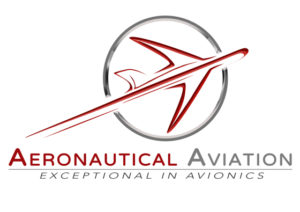Garmin Autoland and Autothrottle for King Air 200
First Retrofit Certification of Garmin Autoland

Garmin is pleased to announce their revolutionary Autoland and Autothrottle capability is nearing imminent STC approval on select G1000® NXi-equipped King Air 200 series aircraft, with future certification for the King Air 300 series expected in 2024. This certification marks the first time Garmin Autoland and Autothrottle have been offered as a retrofit solution, as well as the first certification with G1000 NXi. Full Autothrottle integration with the G1000 NXi reduces crew workload in the cockpit by managing aircraft speed and power and provides engine protection against potential engine exceedances. In the event of an emergency where the crew can no longer perform their duties, Garmin Autoland can control and land the aircraft without human intervention1.
Garmin Autothrottle
Garmin Autothrottle provides extensive
Autothrottle will also activate automatically in the event of an aircraft overspeed or underspeed situation and takes into account flap and gear position. If Autothrottle detects an engine failure, it automatically sets the power lever on the failed side to a fixed position and adjusts the operative throttle lever to maintain the selected airspeed reference
Garmin Autoland

Once activated, the system calculates a flight path to the most suitable airport, initiates an approach to the runway and automatically lands the aircraft. The system takes into consideration a breadth of information and criteria and will automatically communicate with air traffic control(ATC) throughout the entire event, advising controllers and pilots operating near the aircraft of its location and intentions.
Throughout an Autoland activation, the system provides simple visual and verbal communications in plain language, so passengers have the information and know what to expect. The flight displays show the aircraft’s location on a map alongside information such as the destination airport, estimated time enroute, distance to the destination airport and fuel remaining. Airspeed, altitude and aircraft heading are labeled in an easy-to-understand format and passengers also have the option to communicate with ATC by following instructions on the multi-function display.
At any time, a pilot can easily deactivate Autoland with a single press of the “AP” autopilot key on the autopilot mode controller, or the autopilot disconnect button on the yokes. The flight display shows a message that confirms Autoland has been deactivated and in the event of an accidental deactivation, the system shows passengers how to reactivate Autoland if needed.
During an Autoland activation, the Garmin Autothrottle system is used to automatically manage aircraft speed and engine power so the aircraft can climb, descend or maintain altitude as needed. If temperatures are conducive to ice accumulation, Autoland activates anti-ice and deice systems for the engines and control surfaces. On approach to landing, the system initiates a controlled descent to the airport. If the aircraft needs additional time to descend or slow down during the approach, the Autoland system initiates a standard holding procedure. Once Autoland configures the landing gear and flaps, the aircraft begins its descent to the runway and lands. On the runway, automatic braking is applied while tracking the runway centerline to bring the aircraft to a complete stop. Engine shutdown is also automated so occupants can safely exit the aircraft.
New G1000 NXi Features
With the latest G1000 NXi upgrades, King Air owners can take advantage of additional features. Synthetic Vision Technology (SVT™) has been upgraded to now include a 3D exocentric view of the SafeTaxi® airport environment to aid situational awareness while taxiing. SVT also displays 3D building footprints including hangars, terminals and towers, taxiways, aprons, signs and other markings to help reduce runway incursions by providing guidance while taxiing at airports contained in the SafeTaxi database. These SVT updates also increase topographical clarity, sharpened water and terrain boundaries, improved obstacle and powerlines display, enhanced runway and airport sign depiction and more.
Additionally, Garmin’s recently announced PlaneSync™ connected aircraft management system2 will simplify the lives of King Air3 owners and operators by automating database updates, providing real-time remote aircraft status4 and automatically transmitting flight log and engine data to the cloud after landing5. The system also includes Emergency Descent Mode (EDM) as a standard feature that is enabled automatically, in the event of a loss in aircraft pressurization.
Adding on to Garmin’s revolutionary electronic stability and protection (ESP™) technology, one engineinoperative ESP assists the pilot in maintaining control in the event of a single engine failure. ESP pitch and roll limits will adjust to prevent excessive pitch or bank angles while the pilot performs single engine procedures.
Garmin Autoland and Autothrottle for select King Air 200 configurations are expected to be available in the third quarter of 2023. Garmin Autoland and Autothrottle are expected to be available for additional KingAir 200 and King Air 300 series aircraft in 2024. Similar to other Garmin Integrated Flight Deck installations, this installation will be available to approved G1000 NXi installers.
For more information or to book your upgrade please contact us on [email protected]
1See Garmin.com/ALuse for Autoland system requirements and limitations.
2Active PlaneSync and database subscriptions required for automatic database updates. Active PlaneSync subscription plan required for flight loguploading. Features are available on-ground only and requires GDL 60 to have active LTE or Wi-Fi connectivity; signal strength and other factors may apply. See Garmin.com/PlaneSyncCoverage for LTE coverage details.
3Available for the King Air 200 series.
4Remote aircraft status requires active PlaneSync subscription. User’s smart device must have internet connectivity. Feature is available on-groundonly and requires GDL 60 to have LTE connectivity; signal strength and other factors may apply. See Garmin.com/PlaneSyncCoverage for coverage details.
5PlaneSync engine and flight data logging capability will be available in 2024.
